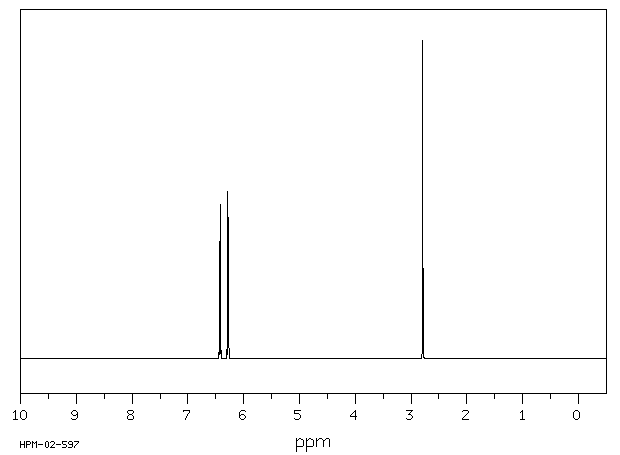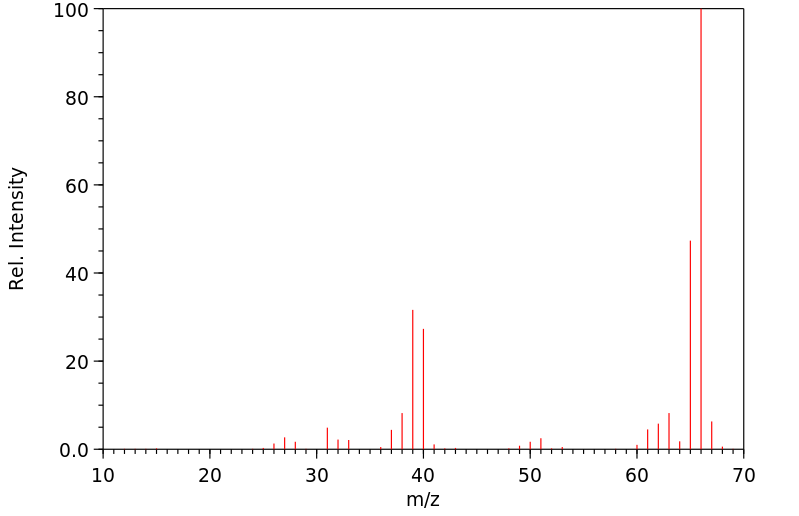毒理性
识别和使用:1,3-环戊二烯是一种无色液体,具有不愉快的气味。它用作树脂制造中的起始化合物,在有机合成中作为合成前列腺素、氯化杀虫剂和通过螯合形成三明治化合物的起始材料。人类暴露和毒性:人类可能在制造过程中暴露。短期暴露:暴露可能刺激眼睛、皮肤和呼吸道。皮肤接触会引起灼热感和皮疹。长期暴露:暴露可能损害肝脏和肾脏。暴露可能导致皮肤过敏发展。如果发展过敏,即使是低剂量的暴露也可能引起症状。没有进一步的人类研究可以找到。动物研究:暴露于1,3-环戊二烯蒸气会在10分钟内对青蛙产生中枢神经系统抑制作用,70分钟内完全恢复。在大鼠中,53天内平均浓度为500 ppm的环戊二烯连续每日7小时暴露35次,导致肝脏和肾脏轻微损伤,描述为肝细胞中央小叶的混浊肿胀和肾小管上皮细胞的混浊空泡化。相比之下,兔、大鼠、豚鼠和狗在250 ppm的重复每日暴露下没有产生效果。在兔中,3毫升的皮下注射是一剂中枢神经系统抑制剂量,会导致致命的惊厥;然而,0.5到1.0毫升的注射没有引起中枢神经系统抑制。中枢抑制时的体征和症状包括原发性运动不安和死亡前呼吸间歇率降低。该液体引起明显的局部刺激,胸膜和腹膜腔积液和肾脏充血。
IDENTIFICATION AND USE: 1,3-Cyclopentadiene is a colorless liquid with an unpleasant odor. It is used as a starter compound in the manufacturing of resins and in organic synthesis as a starting material for synthetic prostaglandins, chlorinated insecticides, and formation of sandwich compounds by chelation. HUMAN EXPOSURE AND TOXICITY: Human exposure may occur during the manufacturing process. Short term exposure: exposure can irritate the eyes, skin, and respiratory tract. Skin contact causes a burning sensation and rash. Long term exposure: exposure may damage the liver and kidneys. Exposure can cause a skin allergy to develop. If allergy develops, even low exposures may cause symptoms. No further human studies could be located. ANIMAL STUDIES: Exposure to 1,3-Cyclopentadiene vapors produce CNS depression in the frog in 10 minutes, with a complete recovery in 70 minutes. In rats, 35 repeated daily 7-hour exposures to cyclopentadiene during a period of 53 days at an average concentration of 500 ppm resulted in mild injury to both liver and kidneys described as centrilobular, cloudy swelling of liver cells and cloudy vacuolization of renal tubular epithelium. In contrast, repeated daily exposures at 250 ppm produced no effects in rabbits, rats, guinea pigs, and dogs. In rabbits, subcutaneous injection of 3 cc was a CNS depressing dose with fatal convulsions; however, injections of 0.5 to 1.0 cc did not induce CNS depression. Signs and symptoms during CNS depression included primary motor unrest and a decreased intermittent respiration rate prior to death. The liquid caused marked local irritation, exudates in the pleural and peritoneal cavities, and hyperemia of the kidneys.
来源:Hazardous Substances Data Bank (HSDB)










